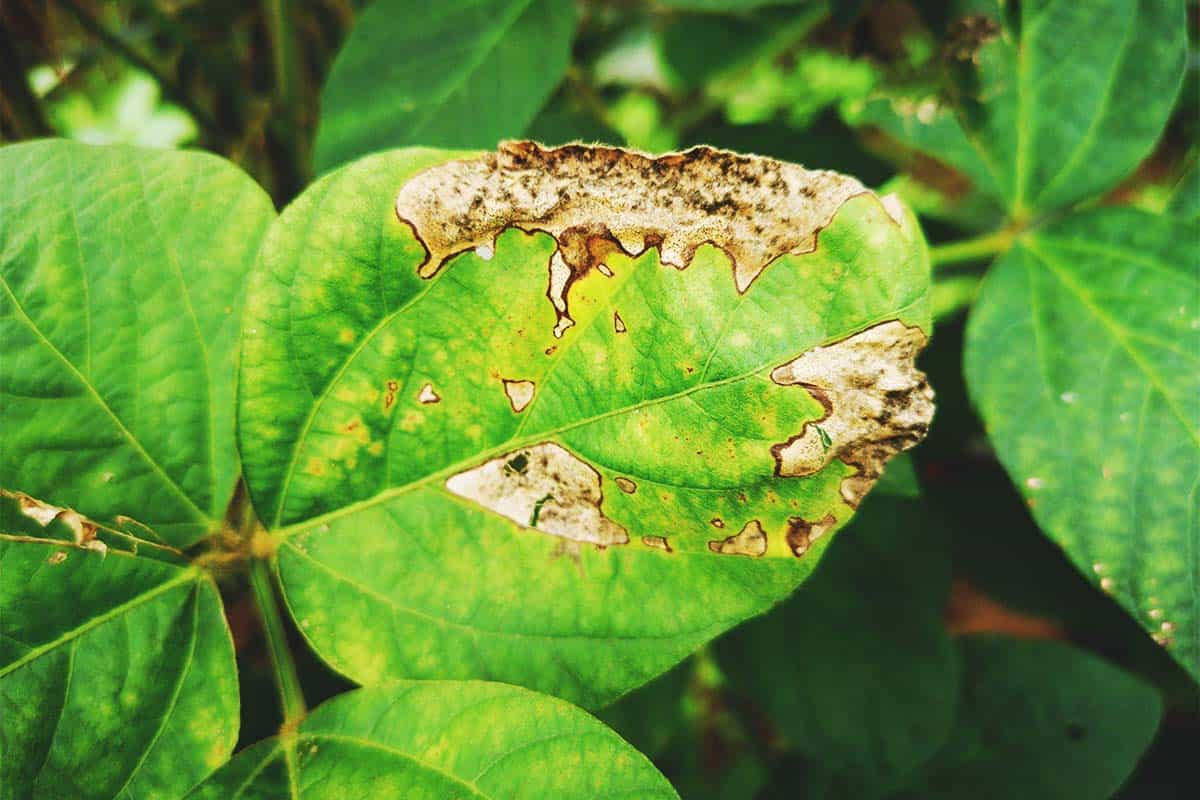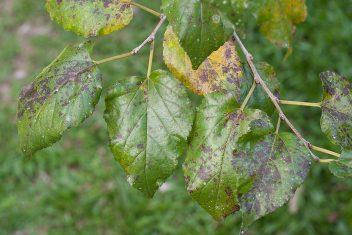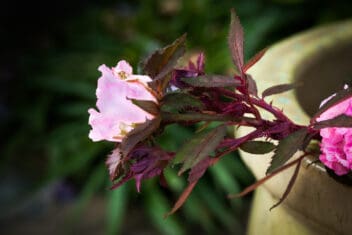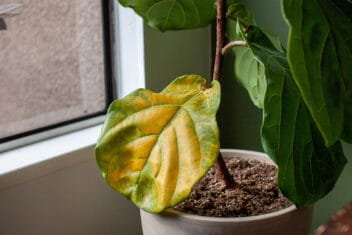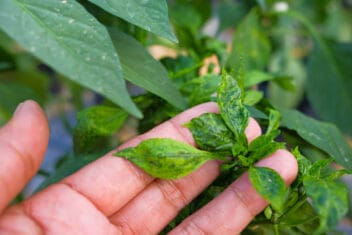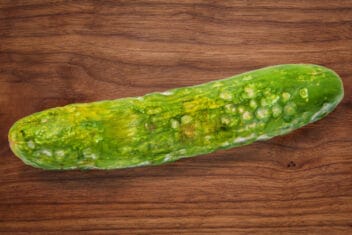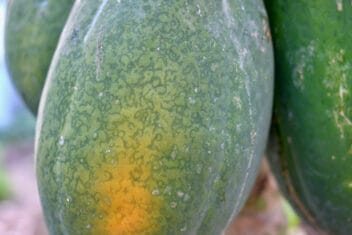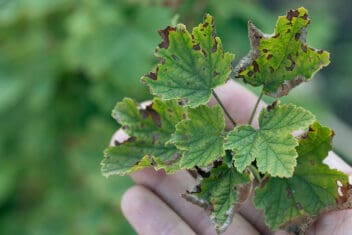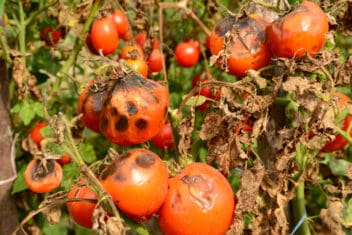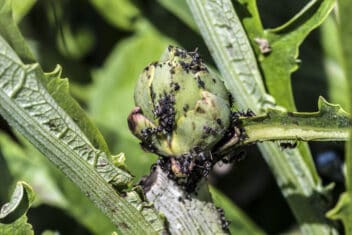I hate bugs. I really do. But worse than insect damage in the garden are the diseases such as bacterial blight, which bugs transmit to plants as they munch and crunch through leaves.
Diseases are a whole other foe from insects. You can’t see disease in the same way as you can a bug. They can creep up on you and decimate an entire crop like a wave.
It’s also possible to transmit diseases in your garden yourself by poor sanitation habits and carelessness without even realizing it.
Diseases can crop up at any time in a plant’s life cycle. Bacterial blight usually waits for an injury to a plant and then it attacks – and once it does, your plant could be toast.
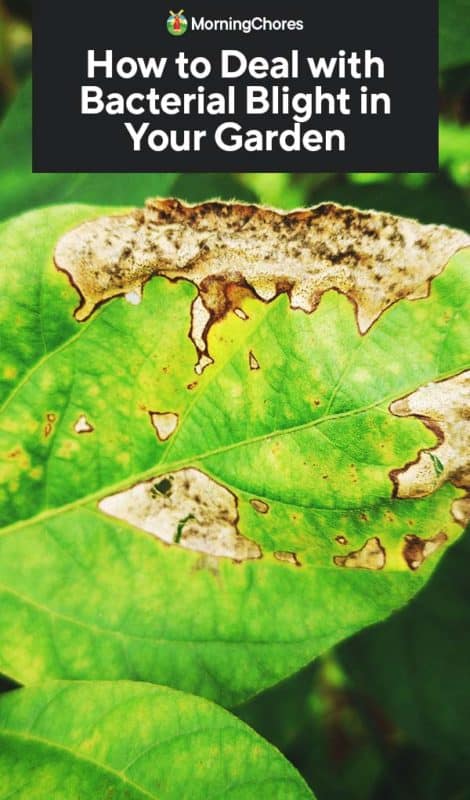
What is Bacterial Blight?
Bacterial blight is a common garden ailment caused by a bacterium called Pseudomonas syringae pv. syringae. It’s a serious disease that affects many plants, including several Asian lilac varieties along with other large fruit and nut tree species.
Bacterial wilt, which is also known as Southern bacterial blight, is caused by the bacterium Ralstonia slanacearum.
Early blight, on the other hand, is a disease caused by a fungus called Alternaria tomatophila and A. solani. It commonly affects tomato plants. Like its bacterial counterparts, it also survives for long periods in the soil or on diseased plant matter. A fungus also causes late blight.
All three are difficult to eradicate once present in garden soil.
There are a variety of bacteria and fungi that cause different types of blight. The term is often used as a catch-all for diseases that cause dark spots and lesions on plants. All kinds of blight are challenging to treat effectively.
How Does Bacterial Blight Spread?
The bacterium survives easily on affected plant material and in the soil. Insects spread the disease, but poor sanitation of garden tools is another culprit. The bacterium is also often present on plants but doesn’t affect them until it enters through an opening (usually through insect damage).
Once it has infiltrated the plant, bacterial blight substantially hampers the plant’s ability to access water and nutrients. Left untreated, it leads to certain death.
Many types of blight are more likely to cause problems in hot, humid weather.
Signs of Bacterial Blight
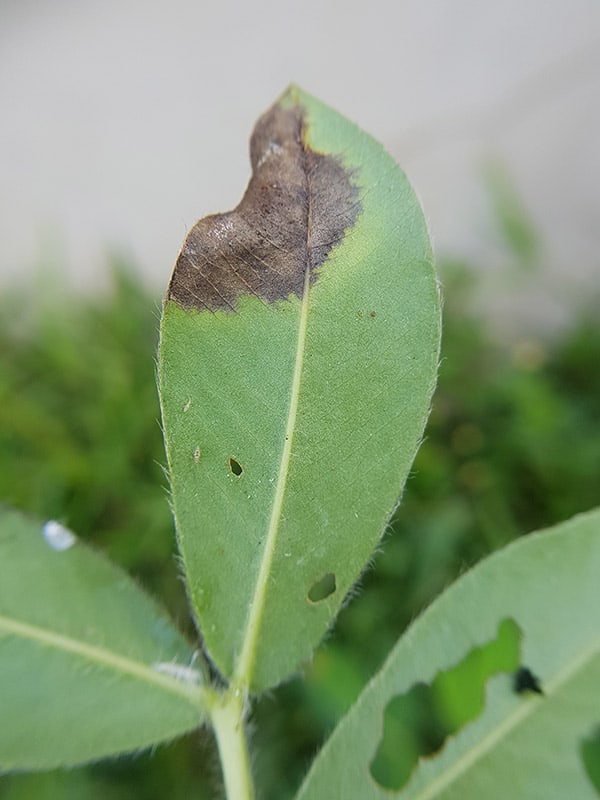
The most obvious sign of the disease is necrotic tissue on foliage. Dark brown spots with yellow rings are also a symptom of bacterial blight. Another sign of the disease is black marks on twigs or branches. Eventually, in its later stages, the disease causes plant foliage to die back.
On trees and other woody plant life, a surefire sign of bacterial blight is an oozing wound from which sap seeps out.
Early identification is crucial if you want to attempt to save any plant life. In the case of edible plants infected with fungal blight, I’d suggest getting rid of diseased plant material sooner rather than later to prevent your whole crop from becoming infected.
Which Plants Are Vulnerable?
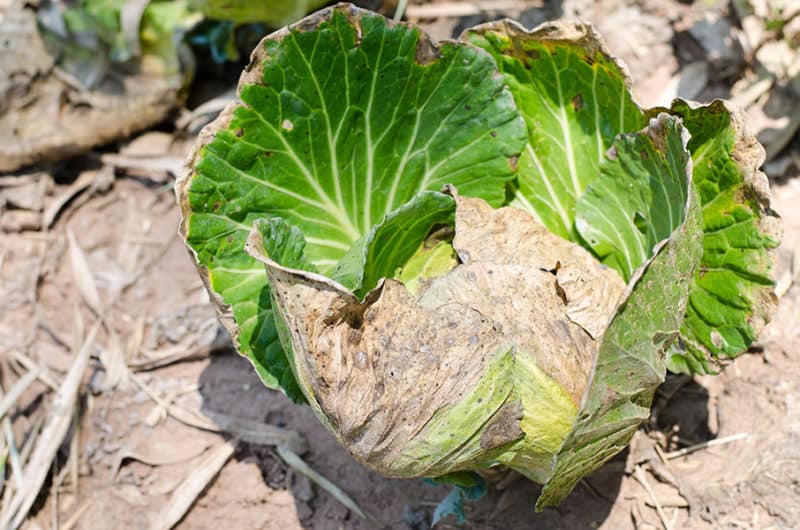
Many plants are vulnerable to bacterial blight, but plants with insect damage are much more likely to contract the disease than plants without an insect infestation. This is because as they feed on the plant foliage, insects create openings and access points for the bacterium to infect the plant.
Bacterial blight tends to affect woody plants like trees and shrubs. Other types of blight are more likely to affect edible garden plants like tomatoes and potatoes.
How to Prevent Bacterial Blight
Promoting a healthy growing environment is the best way to prevent your plants from picking up this disease. Provide plants with enough space to breathe and water from below to prevent moisture buildup on the foliage. Always properly clean your gardening tools throughout the season, too.
Rotate your crops at least every three years to prevent the pathogen from attacking susceptible plants.
When starting seeds or choosing plants for your garden, choose certified disease-free plants to prevent introducing blight into your environment. Choose disease-resistant varieties, as well.
Perform yearly soil tests to prevent a nutrient imbalance that can exacerbate the disease.
Mulch around the base of plants to prevent splashing water from transmitting soil-bound pathogens onto foliage.
In areas where fungal blight is a recurring problem, apply a fungicide to plants before any signs of the disease appear as a preventative strategy.
How to Treat Bacterial Blight
Once a plant is infected with bacterial blight, it’s possible to salvage healthy portions and keep it alive. It is, however, impossible to treat the disease. Management is the only avenue. There is no actual treatment for bacterial blight.
Pruning infected plant material is the first step in controlling the disease. Remove affected parts of the plant and toss them. Do not add them to the compost pile!
Remember to keep tools clean and sanitize after pruning to avoid spreading the disease to other plant life.
If the disease continues to progress after pruning, it may be time to cut your losses and dispose of the entire plant. Leaving it be in its condition may cause the disease to spread to other plant life in the garden.
You can use fungicides in severe cases of blight where a fungus is involved, but they’re not always effective once the disease is in its advanced stages. Again, even fungicide can only control the spread of the disease.
Controlling Bacterial Blight in the Soil
It’s incredibly difficult to eradicate blight once it gets in your garden soil. There’s some evidence, however, that solarization can help kill earth-borne pathogens like blight.
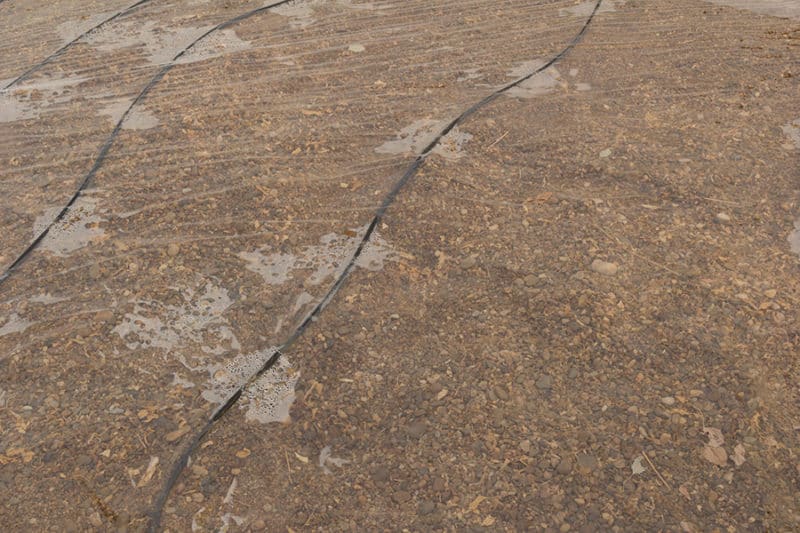
The process involves covering your garden soil with a clear plastic sheet to harness the power and heat of the sun. The soil becomes hot enough to kill off nasty things hiding inside. It’s a long process, however, so be patient.
Solarization also kills weed seed but it is not an effective solution for air-borne pathogens. You can complete the solarization process in 6 weeks. Solarize during the hottest part of the season.
It’s not a permanent solution for getting rid of pathogens and weeds, however, since they can always end up back in your soil. The benefits of solarization also only go to a certain depth.
Anything deeper than about 6-inches won’t be affected by the high heat, so deeply rooted perennials may still be a problem.
Once the process is complete, avoid deeply tilling the soil. Doing so may bring hidden pathogens and weed seed to the surface.
The Bottom Line
Bacterial blight is no laughing matter. Once you have it in your garden, it’s difficult to get rid of it. Prevention is best, but if that fails, our tips can help you get back on the road to a healthy garden.
